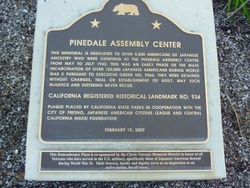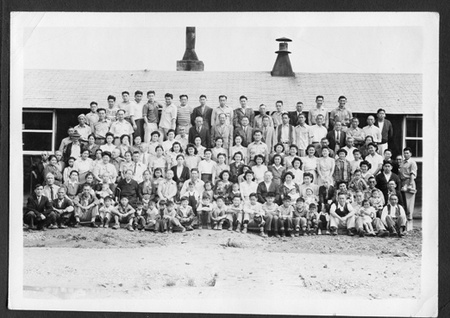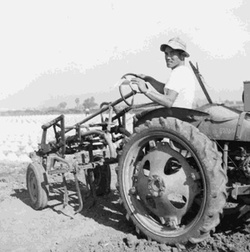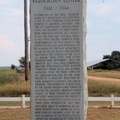My daughter and I recently took the 180 mile trip from Placer County, California to my hometown, Fresno. Most of the trip is made on Highway 99, which runs down the middle of the Central Valley. This is a drive that I know very well. During an eleven year span from 1988-1998, I made the trip once a month to check up on my mother. I separately visited my father since my parents had divorced in the mid-1980s.
Since my mother and father have both passed on, I have made the trip much less often. My last trip to Fresno was months ago to visit my aunt and cousins. Before that, I had not been back in the four years since my father’s funeral.
The purpose of our visit was to see cousins and my aunt. Also, since my daughter joined me, I wanted her to see some landmarks from our collective past and refresh her memories of family. We had only one day to complete the trip. Both she and I had one day off before returning to school and work, respectively.
Because we were coming on a weekday, many of my cousins were working or had plans for the day and we had some complicated logistics to see everyone. One cousin was on vacation. One cousin and his wife cancelled lunch plans with old friends just to make time for us. We met two at their places of work and another after work on her way home. While visiting my aunt, another cousin stopped by with an old family friend, whom I had not seen in more than 30 years. Our visits with each were too short.
Among the places that I wanted to see was the Pinedale Assembly Center Memorial (pinedalememorial.org). My daughter had read about the WWII imprisonment of Japanese Americans in history books. She had been asking questions, but, other than my father’s camp photos, she had few points of reference about that time. I had tried to fill in the blanks where possible.
At the Memorial, I explained to her that the Pinedale Assembly Center was a temporary collection center for Japanese Americans before they were sent off to more “permanent” camps.
The Japanese Americans brought to Pinedale were primarily from outside the Fresno area. They were from Northern California, Oregon and Washington. Authors Kiyo Sato and Mary Matsuda and their families were brought here before being sent to Poston and Tule Lake, respectively. My father’s family had been sent to Jerome, Arkansas and later to Gila River.
After seeing the Memorial, we ended up in downtown Fresno near the Convention Center and the Chukchansi Park, the home of the Fresno Grizzlies baseball team near the end of the day. There we saw another cousin.
The area seemed devoid of any life save the many homeless people who appeared to be getting ready for the evening. Over the past forty years, the middle class has fled northward to new neighborhoods nearer the San Joaquin River and the new freeways appear to make it easier to flee the central core of the City at the end of the workday.
We made the short trip across the railroad tracks to what used to be the Japantown. In my youth Japantown was the center of activity, vibrant with shops and shoppers and the Buddhist Church.
A right turn off Ventura onto F Street took us past building that once housed the family dentist. It’s now surrounded by a concrete block wall and barbed wire; the dentist long since retired. On the other side of the street is a milk processing plant that used to be the Danish Creamery. It has expanded over the years supplanting several houses on the next block.
Just down the street was my mother’s apartment which is across from the annex of the Buddhist Church. The apartment building looked relatively unchanged with its whitewashed exterior and Spanish tile roof. I had moved my mother into that apartment in the late 1980s when she returned to Fresno from the East Coast. She wanted to be back in the Japantown she once knew.
However, she was disappointed because fewer Japanese Americans remained in the area. As they became more affluent and fewer remained in farming, Japanese-Americans moved northward. As they did, fewer needed the services provided by Japantown businesses.
We came to the Buddhist Church at the corner of Kern and F Streets. I pointed out the steep front steps that, as a young boy, I had trouble climbing up. Quite frankly, I was afraid of heights and those stairs scared me.
My family did not regularly attend this Church. We lived out in the country and regularly attended a rural church in the community of Bowles. For special occasions, such as weddings, funerals and festivals, we got to go to town. In the Fresno Buddhist Church, cousins were married and prayers said for departed relatives.
A few years ago, the members of the Fresno Buddhist community voted to open a new church, following their members northward. The old Church, on Fresno’s Register of Historic Resources, and the surrounding grounds are now for sale to help finance that new church.
Along Kern Street, other landmarks from my youth, Komoto’s Department Store and Aki’s Hardware, closed long ago. I think only the Central Fish Market remains, now run by the nephew of old owner.
We continued down the Kern Street and after a couple of turns, we were on Fresno Street headed to the grocery store that my father used to own, the Two Way Fruit Stand. My father had opened a fruit stand in the city in order to sell the produce from his farm. At its original location, the store could be approached on two streets and had entrances on both those streets. Hence the name Two Way.
From that fruit stand beginning, business grew enough that my father expanded the store several times. Two Way became a grocery store selling most of the items that you might find in a supermarket.
The store was open year-round and half days on Thanksgiving, Christmas and New Years. The income from Two Way supported our family through the better part of three decades and supported my father’s retirement. My siblings and I grew up working in the store before and after school.
In the 1980s, the city wanted to redevelop the area around the store. They asked my father to relocate his store to a nearby corner. After some negotiation, my father agreed and in 1988 opened a more modern store at its current location at the corner of Thorne and California. Though the old store and an adjacent house were razed, the land remains vacant more than 20 years later.
Eventually in the 1990s, my father finally decided it was time to slow down. He sold Two Way and gave up the sixteen hour days in the store and in the fields. He could rest his weary body by being in bed well before primetime. He also could spend more time playing cards and pool with his buddies.
I pointed out to my daughter that the exterior and interior of Two Way had not changed much in the past twenty years. It is still among the few grocery stores in this part of Fresno, though just up Fresno Street near the freeway is a shopping center anchored by a large supermarket.
It was getting late and we needed to get home. I turned back onto Fresno Street to head back to 99. I pointed out to my daughter the boarded up building that used to be Jerry’s Barbershop on the left and another building that used to house Joe’s Barbershop on the right. There was Dr. Hashiba’s old house where the good Doctor administered emergency care to the young Ben on many occasions. Finally, there was the building that used to be Renge’s Pharmacy. A couple of lights and a left turn took me to the freeway onramp.
As we entered the freeway, I turned to ask my daughter what she thinks about our day. She hadn’t complained all day, which is a usual for the teenager that is my daughter. She said that she enjoyed the day visiting with relatives and seeing bits of my past. I’m hoping that she got little hints about what life was like those decades ago.
© 2011 Ben Arikawa










